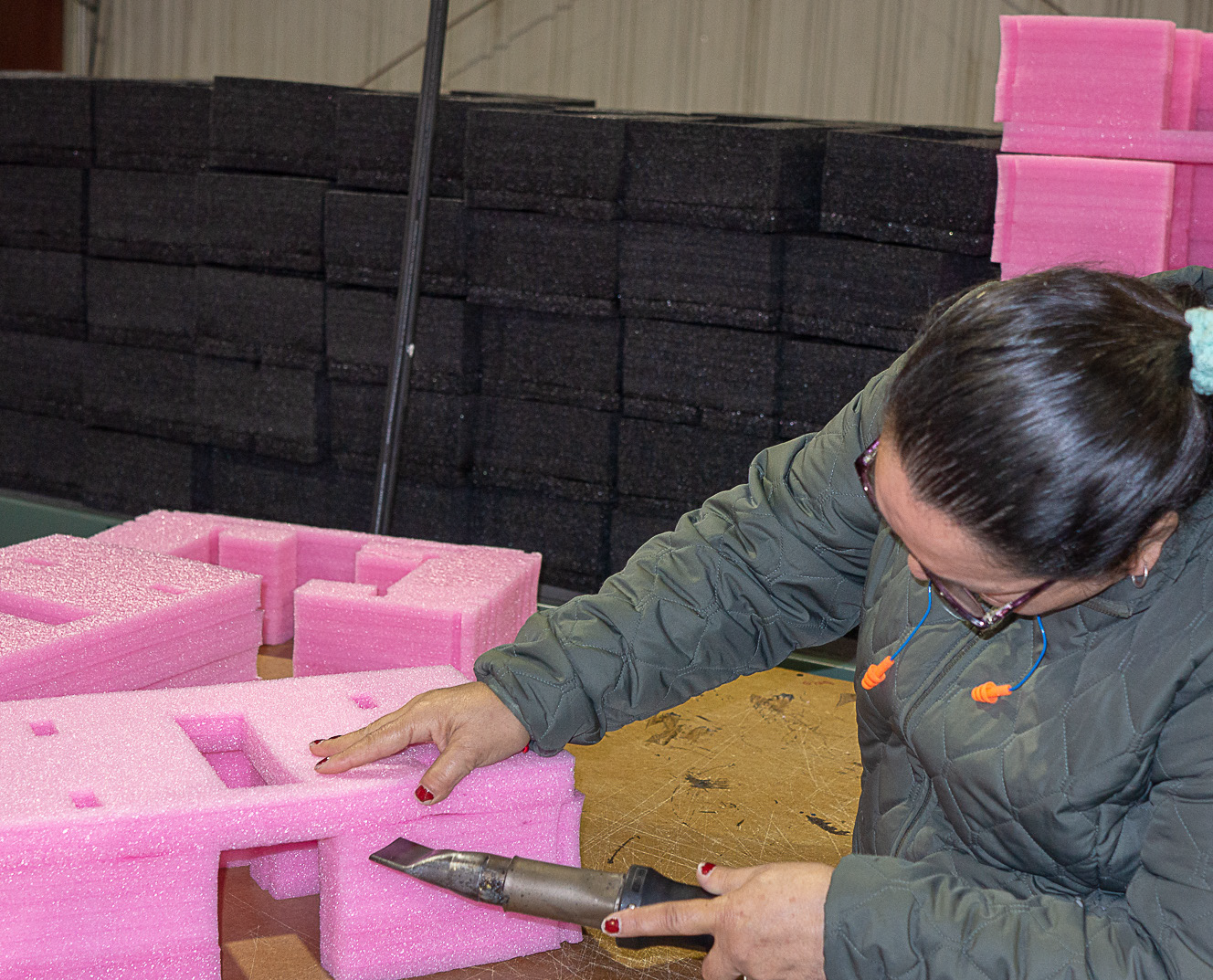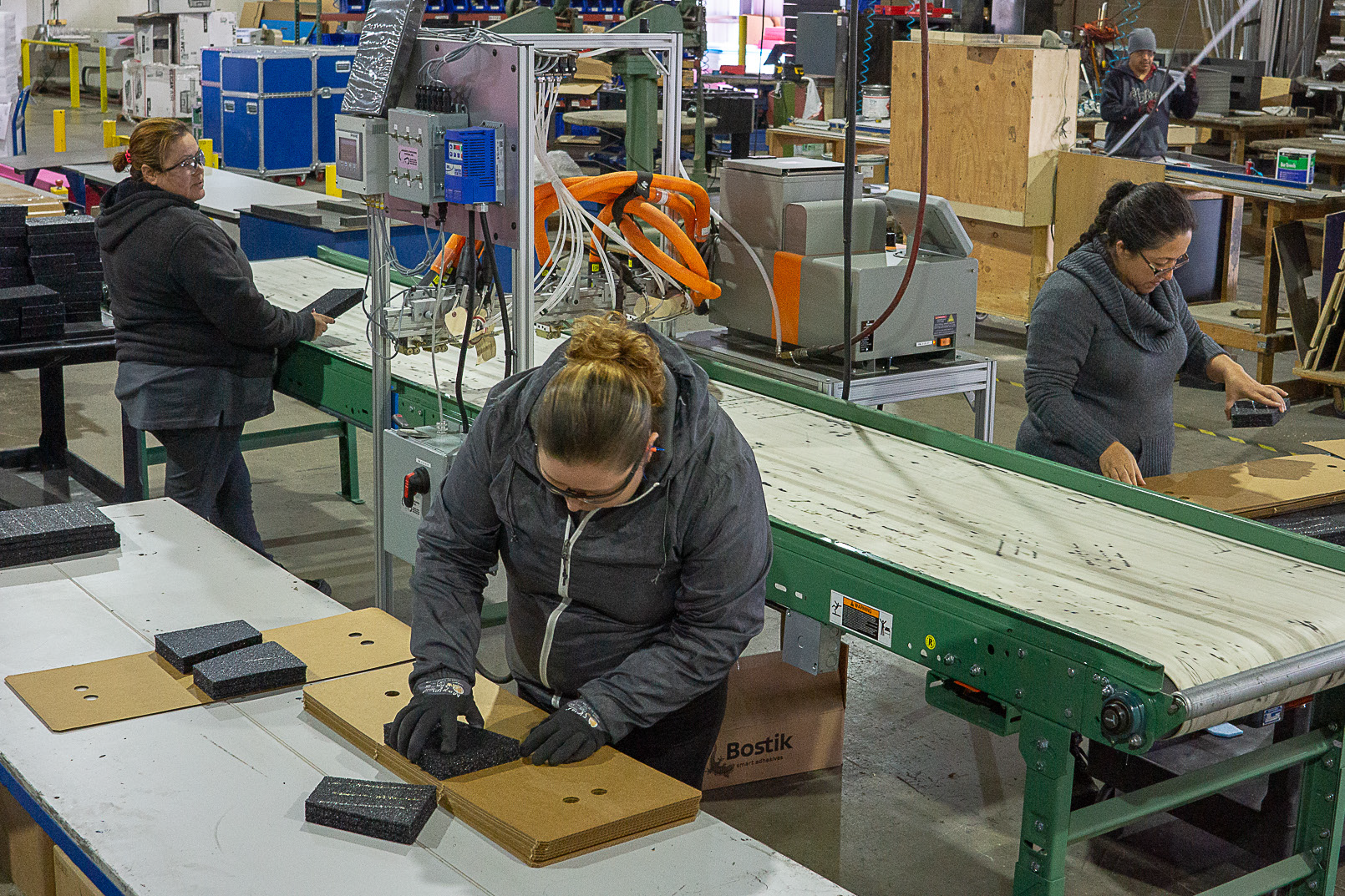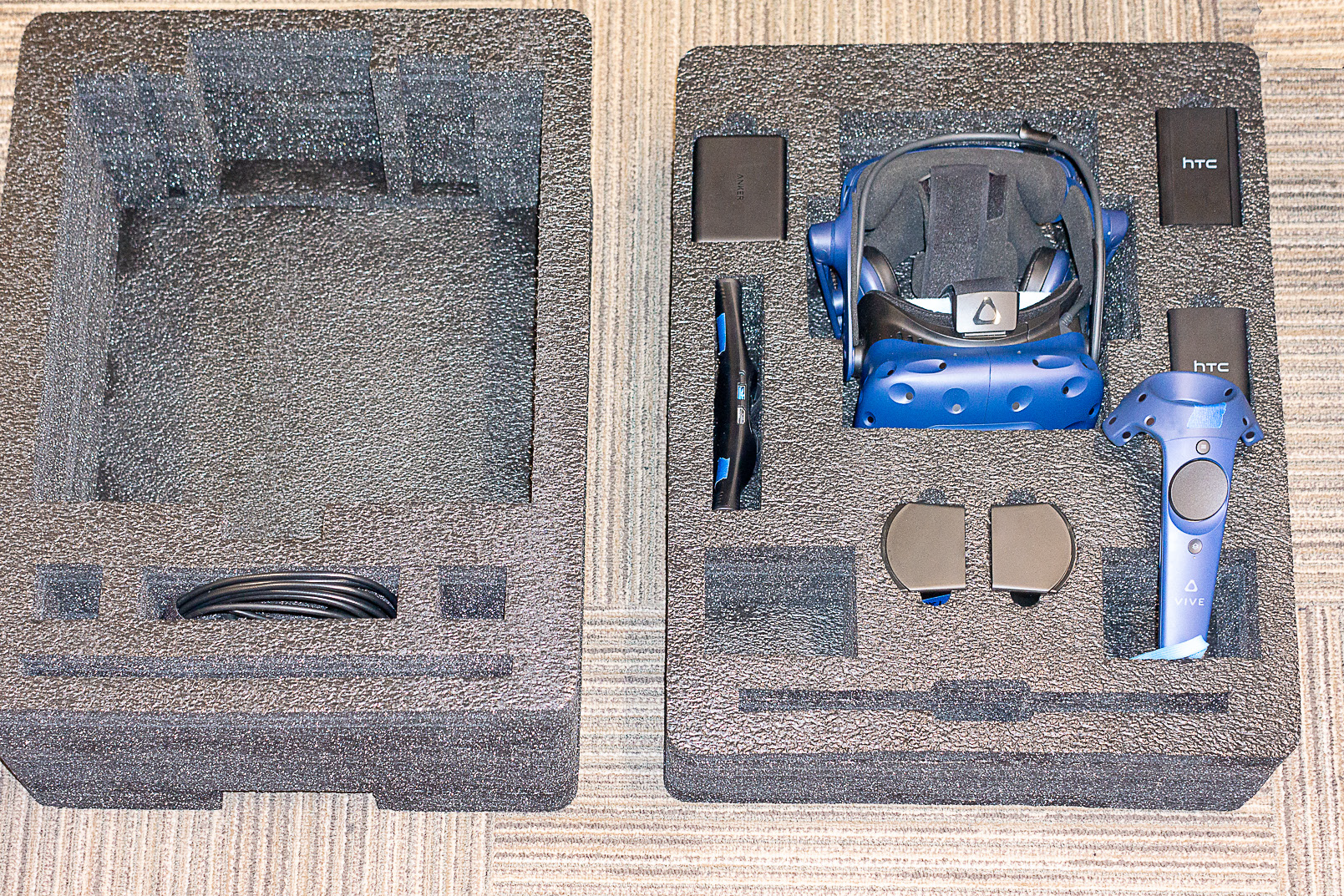Prototyping and die cutting packaging assemblies
5 November 2021

Dieless / Short-run Cutting Parts and Prototyping
“Die-less” cutting cuts parts with a CNC (computer numerically controlled) table equipped with an oscillating knife—a programmable machine capable of making precision cuts with great accuracy. The resulting walls are cut accurately and straight at full depth. Table cut parts are very practical for producing small volume foam parts and quick prototypes which allow the exploration of multiple design possibilities.

We can also cut corrugated and plastic corrugated on this machine to quickly and efficiently make small volume box and foam or prototype combinations.
Die Cut/Die Press
 After the final shape has been prototyped, tested, and finalized, a steel-ruled die on a hydraulic die-press is often used to produce higher quantities of parts. A die press uses a ram and a steel rule die (the tool) in order to cut the proper shapes. A die is a special shaped blade like a cookie-cutter specially designed to cut shapes and maximize yield. The press uses high pressure (many tons) to push the blade through the foam to produce the shape just like pushing a cookie cutter through dough. We have both a manual die press and an automated, high speed, repetitive die press for big jobs.
After the final shape has been prototyped, tested, and finalized, a steel-ruled die on a hydraulic die-press is often used to produce higher quantities of parts. A die press uses a ram and a steel rule die (the tool) in order to cut the proper shapes. A die is a special shaped blade like a cookie-cutter specially designed to cut shapes and maximize yield. The press uses high pressure (many tons) to push the blade through the foam to produce the shape just like pushing a cookie cutter through dough. We have both a manual die press and an automated, high speed, repetitive die press for big jobs.
 Die-cutting is one of the most efficient ways to create a foam shape or cavity. Multiple shapes and parts can be grouped together on an individual die. This way each “hit” creates a multiple piece set, which can be produced every few seconds, making the die cutter the work horse of foam fabrication. This process requires tooling (the “die”) which can be produced in a matter of days.
Die-cutting is one of the most efficient ways to create a foam shape or cavity. Multiple shapes and parts can be grouped together on an individual die. This way each “hit” creates a multiple piece set, which can be produced every few seconds, making the die cutter the work horse of foam fabrication. This process requires tooling (the “die”) which can be produced in a matter of days.

Profiles/Contour Cut
 Profiles or contour cuts are specific shapes other than a square or rectangle, usually on a thick piece of foam (not suitable for diecutting). Any rectangle with a slot, notch, or curve, cylinders, large diameter or wavy cuts, odd geometric shapes or any shape cut within another long block are all profiles. Profiles can be made with a manual fast-wire saw or horizontal or vertical CNC cutters using fast wire or thin saw blades.
Profiles or contour cuts are specific shapes other than a square or rectangle, usually on a thick piece of foam (not suitable for diecutting). Any rectangle with a slot, notch, or curve, cylinders, large diameter or wavy cuts, odd geometric shapes or any shape cut within another long block are all profiles. Profiles can be made with a manual fast-wire saw or horizontal or vertical CNC cutters using fast wire or thin saw blades.
Routed
Some foams can be cut and routed in 3D by a CNC wood router with special bits. Our CNC router can remove material interior to a single block of foam to create shapes and inserts without cutting all the way through the foam and laminating another sheet to it. The tool uses router bits and shapers to cut and remove material.

End Caps, Side Caps and Top and Bottom Frames
Many products are packed in corrugated or other boxes and suspended by a foam set comprising end or side caps, or a top and bottom frame depending on how it will be loaded. In addition,these types of assemblies can comprise cutouts to hold accessories, documentation, other items etc.
 Multiple foam parts can be assembled to create protective foam packaging shapes of many different designs. Most parts are easily glued together by using a hot-melt adhesive. Hot melt is also effective in gluing different foam types to different materials such as corrugated. Spray glue or contact cement can also be an effective adhesive. Multiple PE parts are typically heat sealed or welded together. This leaves no adhesive residue and provides a stronger bond for the joined union.Complex or compound parts can include foam and corrugated assemblies, case inserts and trays.
Multiple foam parts can be assembled to create protective foam packaging shapes of many different designs. Most parts are easily glued together by using a hot-melt adhesive. Hot melt is also effective in gluing different foam types to different materials such as corrugated. Spray glue or contact cement can also be an effective adhesive. Multiple PE parts are typically heat sealed or welded together. This leaves no adhesive residue and provides a stronger bond for the joined union.Complex or compound parts can include foam and corrugated assemblies, case inserts and trays.
Foam Packs and Trays for Corrugated and Hard Cases
Many components or subassemblies will frequently need to be packaged in a single enclosure. A foam pack may consist of several layers of foam shapes and trays designed to isolate each component.
 When cost is an issue, standard foams work well and are easy to fabricate. If appearance and durability or cleanliness are more important, specialty foams can be used because they last longer, have better performance, and have a better look and feel.
When cost is an issue, standard foams work well and are easy to fabricate. If appearance and durability or cleanliness are more important, specialty foams can be used because they last longer, have better performance, and have a better look and feel.
The foam pack can also be designed to protect different products or models having some similar dimensions with the use of perforations, removable inserts and the like. When several packaging goals are important such as to provide separate protection, organization, and aesthetic presentation, it is crucial to work with an experienced designer.
Work with your packaging partner to design and manufacture a foam assembly for your application.
Selecting a packaging partner with knowledge and experience about the performance properties of various foams can improve your packaging. At Larson Packaging Company our design team can help you identify the correct type, amount and density of foam to ensure that your product will always arrive safely.
